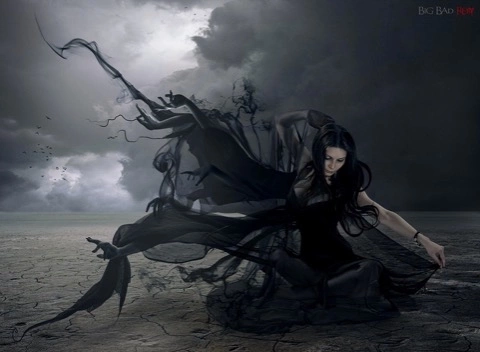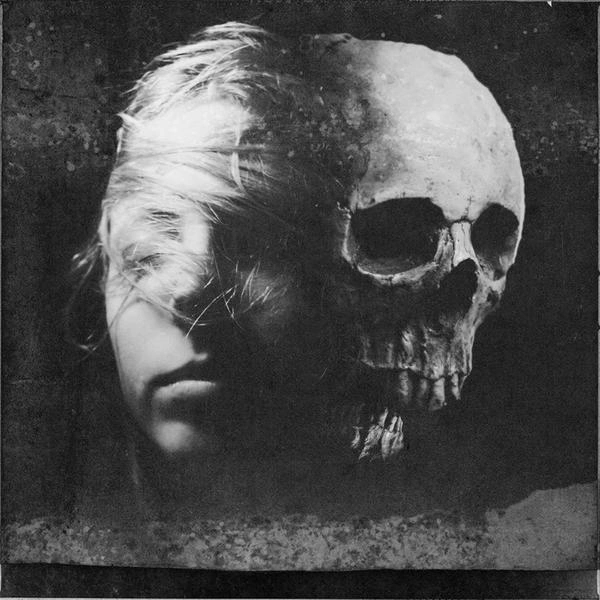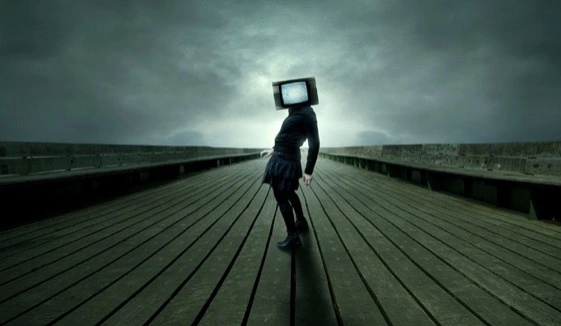Dark Surrealist Art
by David Fox
The concept of dark surrealist art has been a major aspect of surrealist work from its very beginnings. Surrealism (or "above realism") has its dark roots in the aftermath of World War I and the Dadaist's response.
Its outlook was an anti-rational, apolitical and social response to a world that allowed a horrific disregard for humanity. Whatever the reason surrealists rejected any degree of rational explanation. Instead they embraced chaos and unconscious desires, and Freud's theory of psychoanalysis.
Surrealists believed that the adoption of these principles would help in discovering the true world - through the unconscious mind and interpretation of dreams. So what does this mean for dark surrealist art?
Contents
- What is dark surrealist art and where did it come from?
- Characteristics to Look For in Almost All Surrealist Work
- Look Also for Some of the Following Devices
- Themes
- Some Famous Dark Surrealist Artists, and How Have Their Works Been Received by the Public and Critics Alike?
- Other Examples of Surrealism
- How Has Dark Surrealism Evolved Over the Years, and Where Is It Headed in the Future?

Psychoanalytic desires and unconscious thought was central to producing surrealism art. Chaos, unconscious desires, the interpretations of dreams, our repressed desires were important to their works. These superior thoughts and processes trumped all rational thought.
No longer shackled by society and its rules, surrealists were free to tap into their unconscious and paint whatever floated to the top. The unconscious meant that artists could tap into the sexual and violent thoughts and desires that were otherwise repressed.
This often meant that works had dark surrealist themes, and overtones, in the artworks of these early painters.

Freud's interpretation of Dreams influenced surrealist work and still does. It legitimized the use of dreams and the secrets our unconscious hold. Surrealist artists painted dark themes of fantasy, violence and desire. As a result, artists painted works that forced viewers to think, without providing them with a definitive answer.

What is dark surrealist art and where did it come from?
Dark surrealist art is a style of painting and drawing that was developed in the early 20th century by artists who were influenced by the Art Nouveau movement and Symbolism. Dark surrealism is characterized by its use of dark, often nightmarish, imagery and its sometimes disturbing, yet often beautiful, depictions of the human psyche.
While the term "dark surrealism" was not coined until the 1970s, the style of art that it describes has its roots in the early 20th century. Artists such as Max Ernst, Salvador Dali, and René Magritte were all influenced by Art Nouveau and Symbolism, and their work helped to lay the foundation for what would become dark surrealism.
In the 1970s, a new generation of artists began to experiment with dark surrealist ideas, and the term "dark surrealism" was coined to describe their work. These artists, such as H.R. Giger and Julien Blaine, continued to push the boundaries of what was possible in art, and their work has had a profound impact on the world of art today.
Characteristics to Look For in Almost All Surrealist Work
Certain characteristics can be found in almost all surrealist work. When engaging with dark surrealist art always consider their use of:
- Distorted realities
- Unexpected juxtapositions - objects at odds with others
- Elements of surprise - objects that don't normally align or discovery of things you don't automatically see.
- Dream like imagery - depiction of the world of dreams, nightmares and desires and imagination
- Magical and instinctive elements including backgrounds and objects within the space
- Realistic details combine in very odd and unrealistic ways
- A blending of fleeting images for the unconscious to deliver a fantasy, just like a dream
- Illogical uncensored thought
- Use of spontaneous techniques like automatic drawing, frottage and decalcomania (folding painted paper surface then unfolding after adding pressure)

Look Also for Some of the Following Devices
- Levitation - suspended objects in the space
- Changing scale - objects presented in different scales, not possible in the rational world
- Transparency - seeing through particular objects
- Repetition - repeating an object in interesting ways within the space
- Juxtaposed objects - objects placed in interesting and contrasting ways
- Chance objects - elements that have no real link to each other
- A reversal of natural laws - promoting a lack of rationality
Themes
Dark surrealist themes can be found in the artists' dreamscapes where their memories, fears and neuroses go berserk across the canvas. Looking at the great artists of the 1920s and 1930s, you can find traces of many of their fears and anxieties.
Some Famous Dark Surrealist Artists, and How Have Their Works Been Received by the Public and Critics Alike?
Salvador Dali
Dali had pathological fears he carried from his childhood. He feared grasshoppers and blushing. He was profoundly fascinated with erotic fantasies, death and decay, feeding into Freud's psychoanalytic theory. Evidence in his work:
Paintings infested with insects that terrified him…
- Ants-black and swarming are frequently used by Dali and often signify decay and his fear of death
- Floating (levitating) butterflies
- Oversized grasshoppers - reflecting his childhood when children threw them at him for fun because of his fear.
- Use of crustaceans signify protection - tough outer shell protecting the soft, vulnerable inside (lobster and hermit crabs)
- Eggs - hard shell also signifies protection, but also seen as cracked and cooking.
- The Vagina dentate - his fear of castration during intercourse (explains his aversion to sex but obsession with masturbation)
Skulls
Dali was both scared, yet compelled, by death. The skull acted as a symbol for human mortality in his and other dark surrealist artworks.

In this work Dali uses his "paranoic-critical-method" to appeal to his hero, Sigmund Freud. This "dual concept" painting has no rational link between the images. Dali exploits this to show how the irrationality of the brain spontaneously links the skull and ballerina.
The result - an ambiguous image that can now be interpreted in multiple ways. Dark surrealist features include: levitation of the skull, element of surprise, unrealistic scales, hidden images.

War had a major impact in the first half of the 20th century -with two world wars and the Spanish Civil War, death was all around. In this painting completed in 1940, the theme provides dark surrealist content.
The main focus is the horrible face of war, captured in the horror of this painting. The skull presents a view of war against an unfertile landscape. Its withered, miserable appearance, suggests a corpse in extreme misery.
The repetitious identical skulls that make up the eye sockets and mouth, implies a doomed sense of infinity. Surrounding it are serpents, biting at the skull and its abject misery. Key surrealist features: repetition of images (the skull), dream-like background, cooler colors, unrealistic scale,
Magritte
Magritte's work is seen as lighter than other surrealists' work. However, this is a simplistic overview and he too has a darker surrealist side lurking. Magritte watched as his mother was fished from the river after she committed suicide when he was just 14.
He remembered her dress floating over her head and several works include a cloth that covers his subjects' heads.

Works like Le Voil, (The Rape), would knock Magritte's bowler hat fans from their safety perch, given its explicit subject matter and form. Other darker surrealist works include murder scenes that hint at violence and perversity.
Two of his works that present this darker, more violent side of humanity, are The Menacing Assassin and The Titanic Days. Dark surrealist art explores these themes, exposing extreme and repressed desires.
L'Assassin Menacé / The Menacing Assassin
This is s sinister scene that has at its centre, a dead naked woman, strewn across a bed, while the murderer packs up ready to flee the scene. Men stand outside ready to capture.
This is a banal scene, but its perversity is a rare glimpse into the mind of the artist.

The Titanic Days
A disturbingly dark painting. The Titanic Days is erotically charged, violent and disturbing. The scene depicts a man attacking a woman, an attempted rape. His hand forcefully pushes against her leg, and the terror of fear grips the female who is pressed up against her attacker's shoulder.

André Masson
André Masson was traumatised by what he witnessed during WWI, WWII and the Spanish Civil War. He was injured himself, and this left an indelible mark on the man, who used his art to express his disdain for the absolute violence he witnessed.
While his palate is bright and full of colour, this painting explores dark surrealist themes.

Max Ernst
Ernst's use of decalcomania highlights the devastation of war, scorched worlds, rotting corpses and the remains of people from the scourges of war. In The Eye of Silence, the distant horizon represents the lost world the subject grieves for.
The irony of the "great European New Order" Hitler promised is not lost here. Calcified bodies anchored to barbarous landscapes places this work in the realm of dark surrealist art.

Other Examples of Surrealism
Today there are still many examples of surrealism being produced across a range of mediums. Here are a selection of painting and digitally rendered dark surrealist artworks. Under each caption are Surrealist characteristics found in the work.

Transparency, element of surprise, reversal of natural laws, juxtaposition, a contradiction in images, reassertion of Dali's skulls.

Cooler colors, dreamlike, fantasy landscape, hyperrealist imagery/photography, exaggeration, free uncensored thought

Repetition, the egg shell as protection (albeit cracked), cooler colors, dream-like landscape, levitating objects, unrealistic scales

The element of surprise, Dali skull motif, darker cooler colours, juxtaposition of the skull with head shot, photo=hyperreal

Juxtaposition of images, repeated image, dreamlike imagery, element of surprise, free uncensored thought, a contradiction in images

Dream-like subject matter, repetition of images, no guidelines, cooler colours, element of surprise

Soruce: speckyboy.com
Juxtaposition of objects, dream-like landscapes, unrealistic scales, contradictions in images, element of surprise and uncensored thought

Levitation, cooler colours, contradiction of images, element of surprise, reversal of natural laws, repetition of an image, dreamy landscape

Levitation, hidden images, elements of surprise, dream landscape, reversal of natural laws, uncensored thought, juxtaposition

Cooler colors, juxtaposition, element of surprise, contradiction in imagery

Levitation, transparency, dream-like fantasy backgrounds, repeated image, cooler colors, hyperreal, element of surprise, water fall from painting into room with the floating boat, reversal of natural law.
How Has Dark Surrealism Evolved Over the Years, and Where Is It Headed in the Future?
Dark surrealism is a genre of art that combines elements of both surrealism and darkness. It often features dark, mysterious, and sometimes unsettling images. While dark surrealism has its roots in the early 20th century, it has continued to evolve over the years. Today, dark surrealist artists are pushing the boundaries of the genre, creating new and exciting pieces of art. Here's a look at how dark surrealism has evolved over the years, and where it is headed in the future.
Early Dark Surrealist Artists
Some of the earliest examples of dark surrealism can be found in the work of artist Salvador Dali. Dali frequently incorporated elements of darkness and mystery into his paintings, giving them a distinctly surreal feel. Dali's work inspired other artists to experiment with dark surrealism, and the genre began to take shape.
In the 1960s, a new wave of dark surrealist artists emerged, including English artist Francis Bacon. Bacon's work was often horrific and disturbing, featuring twisted human forms and gruesome scenes. His work helped to define the dark surrealist genre and influenced many subsequent artists.
Contemporary Dark Surrealist Artists
Today, there are numerous contemporary artists working in the dark surrealist style. American artist Mark Ryden is one of the most well-known dark surrealists working today. His paintings frequently feature eerie children and animals, often in strange and unsettling situations. Mexican artist Remedios Varo is another prominent dark surrealist. Her work often features bizarre and fantastical creatures, as well as strange landscapes.
Where Is Dark Surrealism Headed?
As the dark surrealist genre continues to evolve, artists are pushing the boundaries of what is possible. Newer artists are experimentiag with more explicit violence and gore, as well as incorporating elements of horror and the supernatural. As the genre grows, it is likely that we will see even more dark and twisted works of art being created.
With its roots in early 20th century art, dark surrealism shows no signs of slowing down. As new artists continue to experiment with the genre, we can expect to see even more dark and disturbing works of art being created.

About David Fox
David Fox is an artist who created davidcharlesfox.com to talk about art and creativity. He loves to write, paint, and take pictures. David is also a big fan of spending time with his family and friends.
Leave a Reply
 |
 |
 |
 |
Now get FREE Gifts. Or latest Free phones here.
Disable Ad block to reveal all the secrets. Once done, hit a button below
 |
 |
 |
 |